Key takeaways
- The Turing Test raises fundamental questions about the nature of intelligence, consciousness, and human interaction.
- Implementing the Turing Test in education fosters critical thinking and engages students in meaningful philosophical discussions about knowledge and understanding.
- Personal interactions with AI reveal the limitations of machines in capturing the nuances of human thought, especially in areas like humor and emotional context.
- The experience with the Turing Test encourages a reevaluation of how we define and value intelligence, both in machines and human interactions.
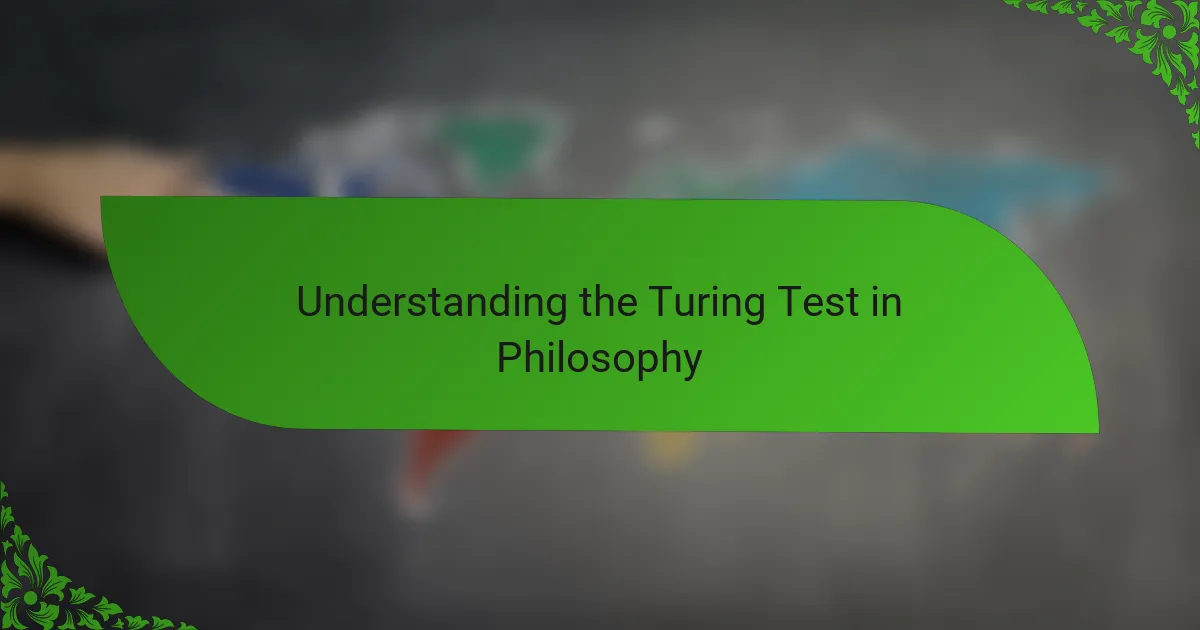
Understanding the Turing Test in Philosophy
Thinking about the Turing Test from a philosophical angle, I found myself wrestling with the question: Can a machine truly “think,” or is it simply mimicking human behavior? This distinction fascinated me because it challenged my own assumptions about intelligence and consciousness. Philosophically, the test forces us to confront what we consider the essence of mind and understanding.
When I first encountered the Turing Test, it felt like a clever trick—just a game of deception to see if machines could imitate humans well enough to fool us. But as I delved deeper, I realized it raises profound questions about identity and self-awareness. Is passing the test enough to claim some form of “mind,” or is genuine consciousness something beyond imitation?
Ultimately, the Turing Test made me reflect on skepticism and belief. How do we know when something truly understands us? This philosophical inquiry isn’t just about technology; it touches on how we relate to others—even humans sometimes—when all we see are words and actions. It’s humbling and, frankly, a bit unsettling.
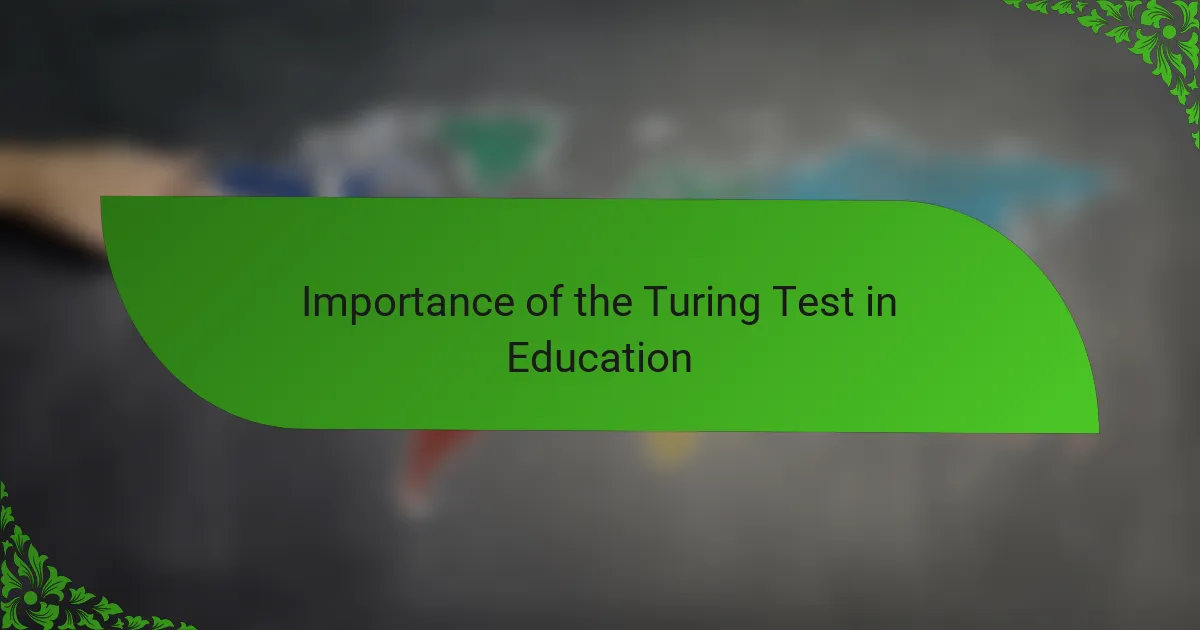
Importance of the Turing Test in Education
When I first brought the Turing Test into my teaching, I noticed how it sparked genuine curiosity among students. They weren’t just learning about artificial intelligence; they were questioning what it means to know, to understand, and to be conscious. It made philosophy less abstract and more alive.
It’s remarkable how this test serves as a bridge between philosophy and technology in the classroom. I found that students who normally struggled with complex theories suddenly had a concrete scenario to debate—can machines think, or is it just clever mimicry? This hands-on engagement deepened their critical thinking in a way textbook explanations never did.
But more than that, the Turing Test invites educators and students alike to reflect on empathy and skepticism. I often ask myself, if a machine passes as human, does that change how we treat it? This question brings ethics right into the conversation, demonstrating how philosophy education can tackle real-world dilemmas through the lens of AI.

Methods for Examining the Turing Test
Examining the Turing Test required me to dive into the actual methods of interaction—primarily text-based conversations where the human evaluator tries to distinguish between a machine and a person. I found that the choice of questions and the context played a huge role in revealing whether the machine was just spitting out programmed responses or actually demonstrating something deeper. It made me wonder: can a clever script truly simulate understanding, or am I just being fooled by clever wordplay?
In my experience, one effective method was a series of iterative dialogues, where I gradually increased the complexity and subtlety of my questions. This approach helped expose the gaps in the machine’s “thought” process, especially when it struggled with humor, ambiguity, or emotional nuance. I realized these subtleties are where human intelligence shines—and where machines often stumble.
At one point, I even tried adopting a skeptical stance, deliberately attempting to trip the machine up with paradoxes and self-referential queries. The way it handled—or failed to handle—these moments gave me valuable insights into the limits of artificial intelligence versus genuine understanding. It raised a broader question for me: should passing the Turing Test be enough to claim consciousness, or is it merely a demonstration of surface-level mimicry?
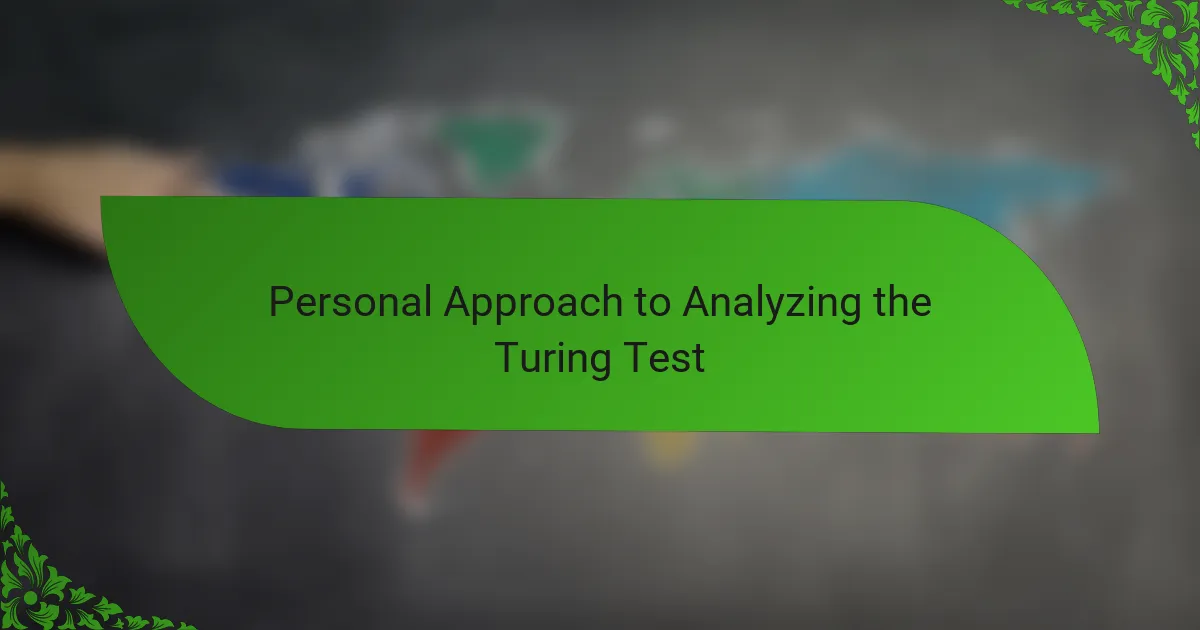
Personal Approach to Analyzing the Turing Test
When I began my personal analysis of the Turing Test, I approached it not just as an experiment but as a dialogue between human intuition and machine logic. I found myself asking whether my own expectations of “thinking” were influencing how I judged the machine’s responses. Was I unconsciously setting traps for the AI, or genuinely open to what it could reveal about artificial cognition?
At one point, I recall feeling a mix of frustration and curiosity when the machine glossed over a subtle joke I made. It struck me how deeply humor is tied to human experience and how its absence in the AI’s responses highlighted the gap between imitation and understanding. This moment made the test feel less like a contest and more like a mirror reflecting what makes us truly human.
I often wonder: does my skepticism help me see the truth behind the test, or does it limit my ability to appreciate emerging forms of intelligence? Balancing doubt with openness became, for me, the heart of analyzing the Turing Test—it’s not only about the machine’s capabilities but also about how we interpret and value those capabilities.
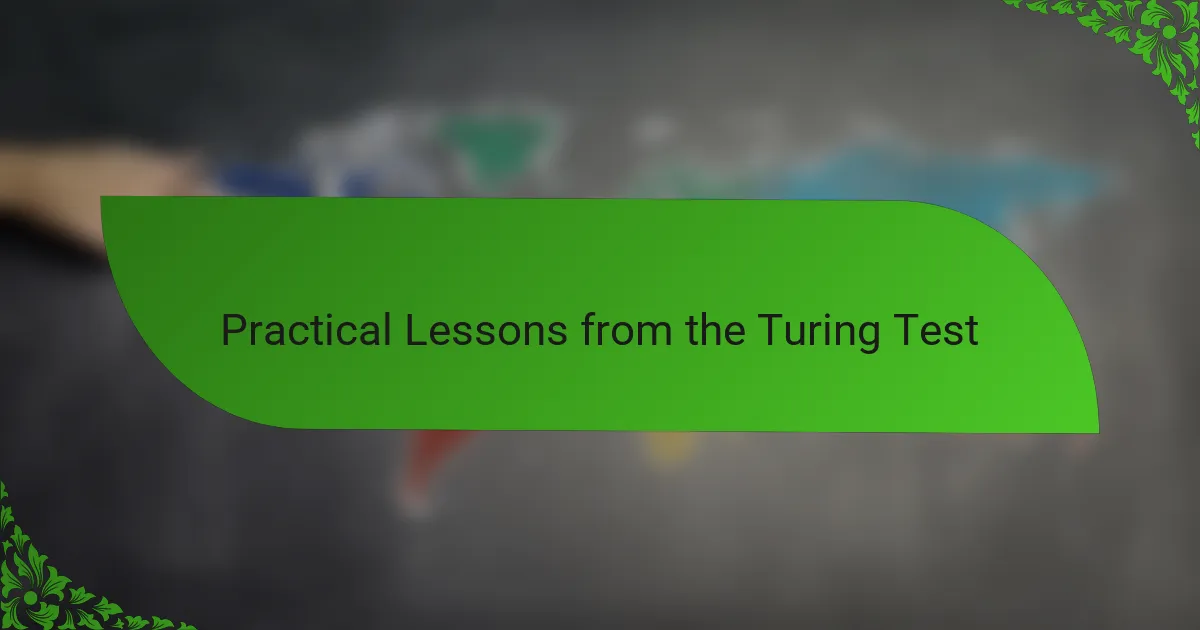
Practical Lessons from the Turing Test
What struck me most while reflecting on the Turing Test is how it teaches us about the limits of human judgment. I realized that if something convinces us it’s human, even momentarily, we’re quick to grant it “understanding,” which made me question: Are we trusting our perceptions or just falling for a sophisticated illusion?
I remember a particular session where the AI managed to respond fluidly, yet when I probed deeper with emotional or ambiguous queries, it stumbled noticeably. This taught me that genuine intelligence involves more than pattern matching—it demands a grasp of nuance and context that machines still struggle to replicate.
Ultimately, the Turing Test encourages us to reconsider what we value in intelligence and communication. Should we measure understanding by perfect imitation, or is there more beneath the surface that machines have yet to touch? This question resonates beyond AI, inviting us to think critically about human interaction itself.
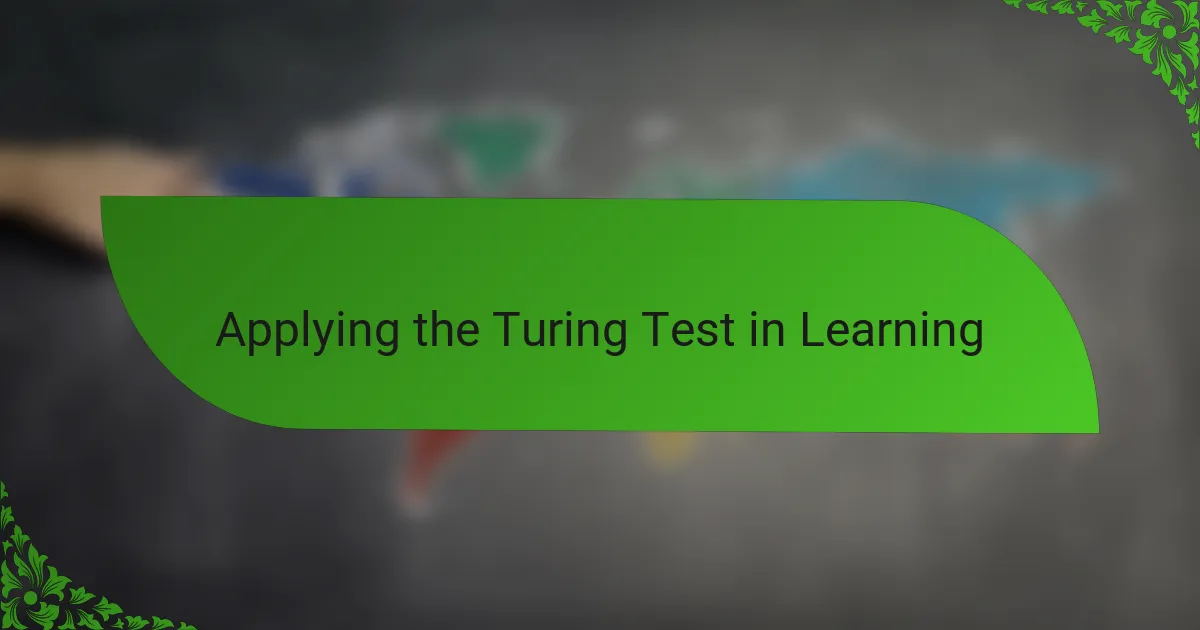
Applying the Turing Test in Learning
Applying the Turing Test in learning has been an eye-opener for me. When I introduced the test as a classroom exercise, students started to see philosophy not just as abstract thought but as a living debate about what it means to “know” something. It made me realize how powerful a well-placed question can be in igniting curiosity and deeper reflection.
One moment that stood out was watching students challenge an AI chatbot during class discussions. Their excitement shifted rapidly from trying to “beat” the machine to questioning the very nature of intelligence and whether passing a test truly implies understanding. It was clear to me then that applying the test isn’t just about machines; it’s about how we think about minds—human or artificial.
I often ask myself and my students: If a machine can mimic human responses well enough to pass the Turing Test, does that change our approach to learning and empathy? This question opens up a rich dialogue where philosophy meets real-world technology, making the learning experience both practical and philosophically profound.